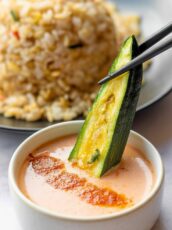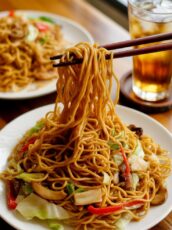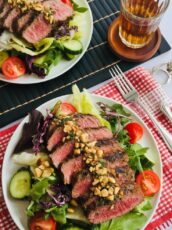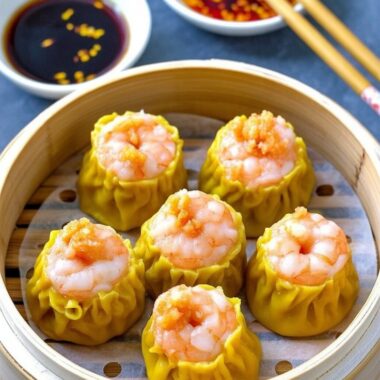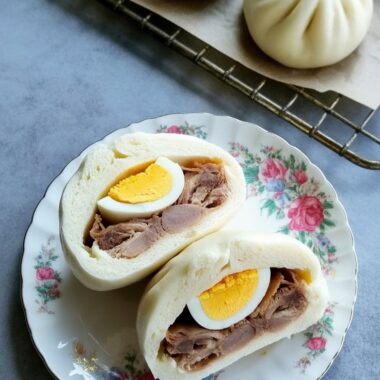A staple in Korean cooking, bulgogi is all about tender slices of beef soaked in a savory-sweet marinade, grilled or pan-seared to perfection. It’s one of those dishes that tastes like it took hours to make, but comes together surprisingly fast—especially if you’ve got the meat prepped in advance. I make this whenever I want to bring a little excitement to the dinner table without too much fuss. And let me tell you, the way the meat caramelizes in a hot pan? That smell alone is enough to make the whole family wander into the kitchen.
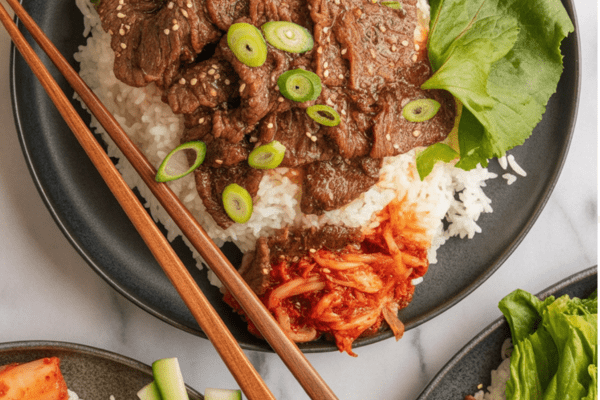
A Family Favorite That Always Hits the Spot
Growing up, this dish was a regular at our dinner table. I remember walking in after school or cricket practice, and the moment that sweet-savory aroma hit me, I knew what was for dinner. My mom would marinate the beef in the afternoon and cook it right before dinner—quick flash in the pan, served with hot rice and something crunchy on the side like cucumber kimchi or lettuce wraps. It was fuss-free, comforting, and packed with flavor.
Now that I’m cooking for my own household, I’ve kept her tradition going. I tweak it here and there depending on what I have, but the essence stays the same: thin, flavorful slices of beef that sear quickly and go with just about everything.
What Is Korean Bulgogi?
Bulgogi literally means “fire meat” in Korean, and it lives up to that name. It’s made with thin slices of beef that are marinated in a mixture of soy sauce, sesame oil, sugar, garlic, and ginger—plus a little fruit (usually pear) to tenderize and sweeten the meat. Traditionally, it’s grilled over an open flame, but at home, a hot skillet works just as well.
While beef is the classic choice, you can also make bulgogi with pork or chicken. Personally, I think ribeye or top sirloin works best because of the marbling, but flank steak is a great budget-friendly alternative if you slice it thin enough.
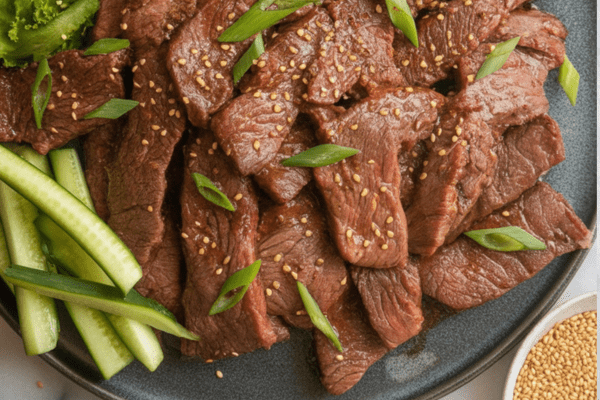
Tips and Tricks for the Best Bulgogi
Freeze the Steak for Easier Slicing
This one’s a game changer. Pop your steak in the freezer for 20 to 30 minutes—just until it firms up a bit. It makes it so much easier to slice into those thin, restaurant-style pieces that cook quickly and evenly. Sometimes I even do this the night before, slice it in the morning, and let it marinate all day.
Don’t Skip the Pear
I always grate a bit of Korean or Bosc pear into the marinade. It adds this gentle sweetness and also helps break down the meat, making it incredibly tender. No pear? Fuji apple works in a pinch, and I’ve used that more times than I can count when I couldn’t find Asian pears.
Use Reduced Sodium Soy Sauce
Trust me, you won’t miss the salt. Reduced sodium soy sauce gives you full flavor without going overboard, which is great if you’re watching your salt intake or just want a more balanced marinade.
Go for a Cast Iron Pan
Cast iron gets hot and stays hot. That’s exactly what you want for bulgogi. It gives the meat that delicious caramelized sear—plus a little smoky edge if you’re lucky. If you don’t have a grill pan, a regular cast iron skillet will do just fine.
Cook in Batches
Crowding the pan is a big no-no. You’ll end up steaming the beef instead of searing it. I like to cook it in small batches, wiping down the pan with a paper towel in between if needed to avoid burnt bits.
Freeze the Marinade or the Meat
One of my go-to meal prep moves is marinating a big batch of beef, dividing it into portions, and freezing it. That way, whenever I’m too tired to cook from scratch, I just defrost and throw it in the pan. You can freeze it before or after cooking—both ways work great.
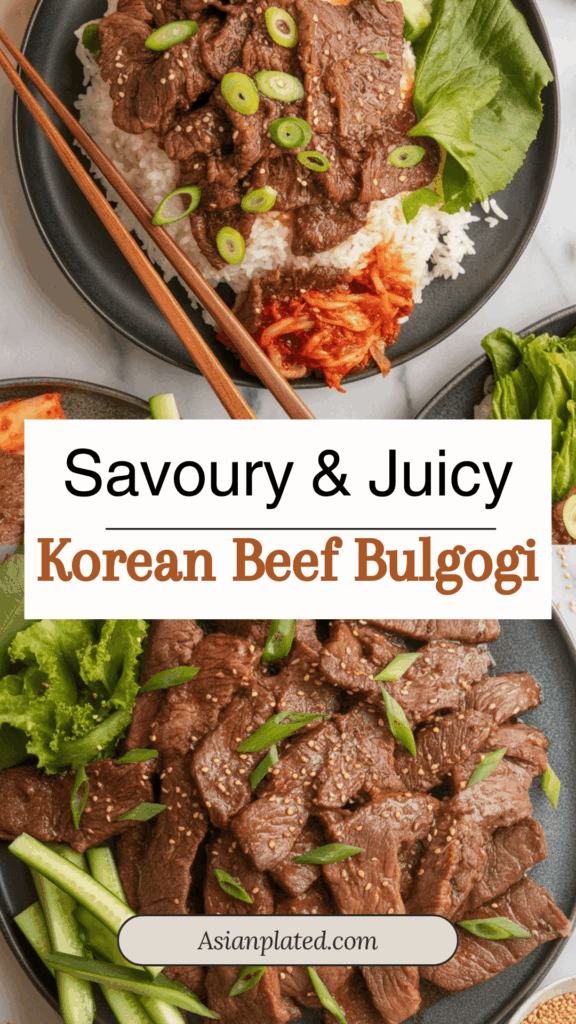
Freezing and Storage
Storing Leftovers
If you’ve got leftovers (which, let’s be honest, isn’t always the case), store them in an airtight container in the fridge. They’ll stay good for about 2 to 3 days.
Reheating
Let the beef come to room temp for 10–15 minutes before reheating. Warm it up in a skillet over medium-high heat, stirring often so it doesn’t dry out. Add a splash of water or a touch of oil if needed.
Freezing Before Cooking
Place the marinated meat into a resealable freezer-safe bag, squeeze out the air, label it, and freeze for up to 2 months. Thaw overnight in the fridge, then cook as usual.
Freezing After Cooking
If you’ve already cooked the bulgogi, let it cool completely, then freeze in a sealed container or bag. Reheat just like the leftovers—medium-high heat in a skillet until hot and caramelized again.
How I Serve Bulgogi at Home
Honestly, bulgogi is so versatile that I change up how I serve it depending on my mood. Most nights, I go classic with steamed white rice and a side of kimchi or quick-pickled cucumbers. But it also makes an amazing lettuce wrap—just tuck some into a romaine or butter lettuce leaf, add a scoop of rice, some julienned carrots, maybe a smear of gochujang or ssamjang, and you’ve got a wrap full of flavor and texture.
It’s also great in rice bowls, with a fried egg on top, or even tucked into sandwiches or sliders for a Korean twist on burgers.
Korean Beef Bulgogi

This simple Korean BBQ recipe delivers incredibly flavorful meat thanks to a rich marinade. The thin, tender slices cook in no time and make for an irresistible dish.
Ingredients
- 1 ½ pounds boneless rib eye steak
- ½ small pear, peeled and coarsely grated
- ¼ cup reduced sodium soy sauce
- 2 tablespoons brown sugar
- 2 tablespoons toasted sesame oil
- 3 cloves garlic, minced
- 1 tablespoon freshly grated ginger
- 1 tablespoon gochujang, Korean red pepper paste
- 2 tablespoons vegetable oil, divided
- 2 green onions, thinly sliced
- 1 teaspoon toasted sesame seeds
Instructions
- Wrap the steak in plastic wrap and place it in the freezer for 30 minutes. Remove the wrap and slice the steak across the grain into 1/4-inch thick pieces
- In a medium bowl, mix the pear, soy sauce, brown sugar, sesame oil, garlic, ginger, and gochujang. Add the mixture and steak to a gallon-sized Ziploc bag and marinate for at least 2 hours or overnight, turning occasionally
- Heat 1 tablespoon of vegetable oil in a cast iron grill pan over medium-high heat. Cook the steak in a single layer, in batches, flipping once, until it’s charred and cooked through, about 2–3 minutes per side. Repeat with the remaining oil and steak
- Serve right away, topped with green onions and sesame seeds if desired
Notes
- If you don’t have a cast iron grill pan you can use a large cast iron skillet instead
Nutrition Information:
Yield: 6 Serving Size: 1Amount Per Serving: Calories: 437Total Fat: 31gSaturated Fat: 11gTrans Fat: 0gUnsaturated Fat: 19gCholesterol: 88mgSodium: 600mgCarbohydrates: 11gFiber: 1gSugar: 7gProtein: 30g
Asianplated.com, occasionally offers nutritional information for recipes contained on this site. This information is provided as a courtesy and is an estimate only. This information comes from online calculators. Although allchickenrecipes.com attempts to provide accurate nutritional information, these figures are only estimates.
Frequently Asked Questions
What Cut of Beef Is Best for Bulgogi?
Ribeye and top sirloin are my go-tos for tenderness and flavor, but flank steak and skirt steak are great budget-friendly options if you slice them thinly enough.
What Can I Use Instead of Pear?
Fuji apples work really well as a substitute. The sweetness and texture are just right for tenderizing the beef and adding flavor.
Do I Need Gochujang for This Recipe?
Not for the marinade itself, but if you like a spicy kick, gochujang (Korean red chili paste) is great as a condiment on the side or in lettuce wraps. I always keep a tub in my fridge.
Can I Still Make Bulgogi If I Don’t Have a Grill Pan?
Absolutely. A regular cast iron skillet or any heavy-bottomed pan will work just fine. Just make sure it gets nice and hot before you add the beef.
What Do You Usually Serve With Bulgogi?
My default is rice and kimchi, but it’s also wonderful with pickled vegetables, sautéed spinach, or even tucked into a warm tortilla for a Korean taco night. The possibilities are endless.
Try other recipes:



